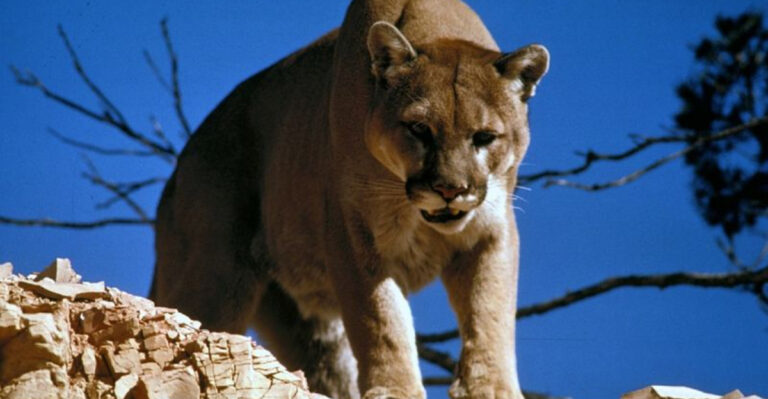14 Strongest Sea Animals On Earth And Where To Find Them
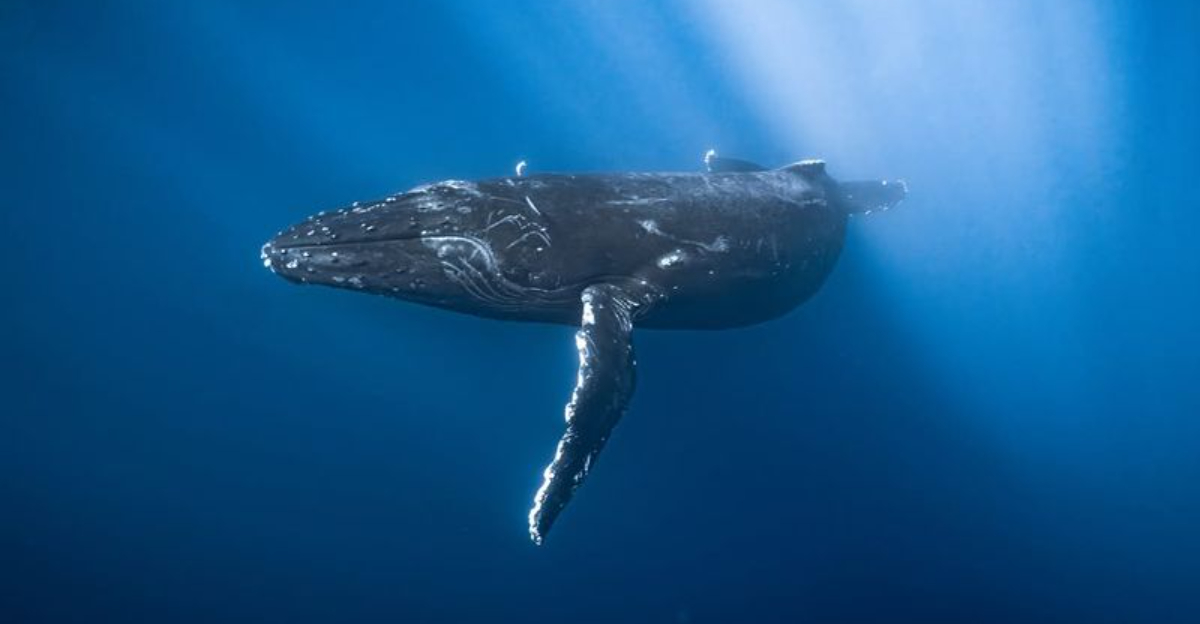
The ocean is home to some of the most formidable creatures on the planet, each with its own unique strengths and adaptations. These sea animals not only showcase incredible power, but they also thrive in diverse marine environments across the globe.
From the crushing depths of the ocean floor to the bustling coral reefs, these creatures are a testament to nature’s ingenuity and resilience.
1. Blue Whale
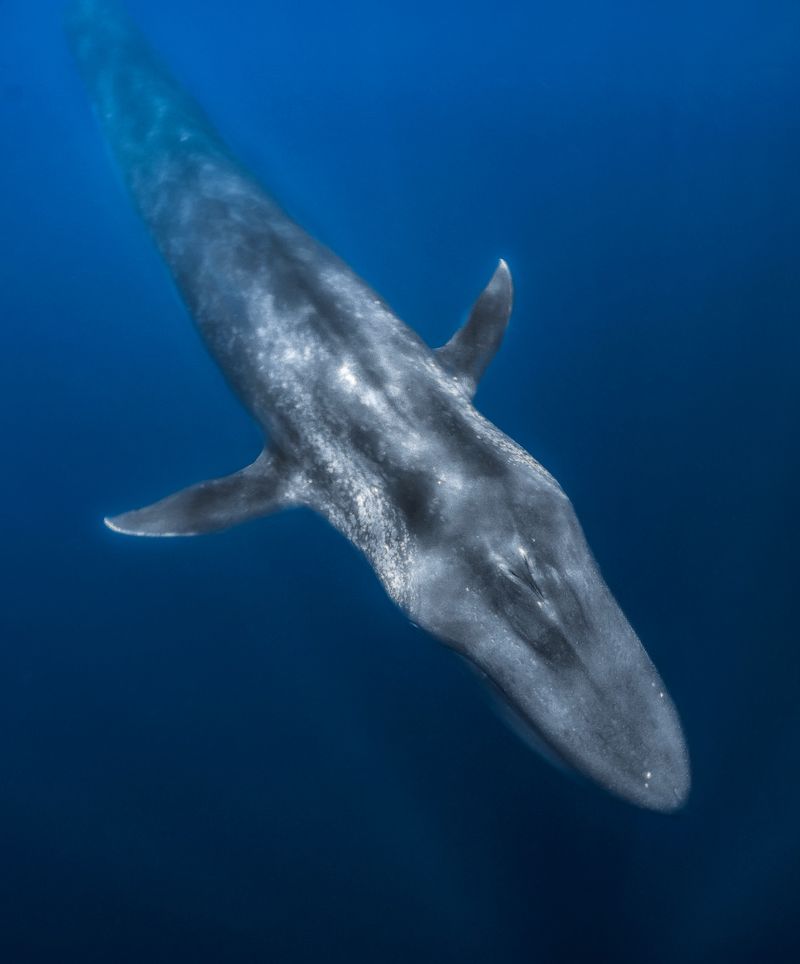
The blue whale is the largest and one of the most powerful animals known to have ever existed. Found across all the world’s oceans, these majestic creatures migrate annually between feeding and breeding grounds. Their immense strength is evident in their ability to travel thousands of miles each year.
Blue whales primarily feed on krill, and their feeding process is a spectacle in itself. They can consume up to 4 tons of krill daily by lunge-feeding, a method that involves swift acceleration to engulf large volumes of water and prey.
Their presence is most noticeable in the icy waters of Antarctica, where krill is abundant, as well as in the North Atlantic and North Pacific Oceans.
Despite their size, blue whales are agile swimmers, reaching speeds of over 20 miles per hour. Their power is also displayed in their vocalizations, which are the loudest of any animal on Earth, communicating across vast oceanic expanses.
2. Orca
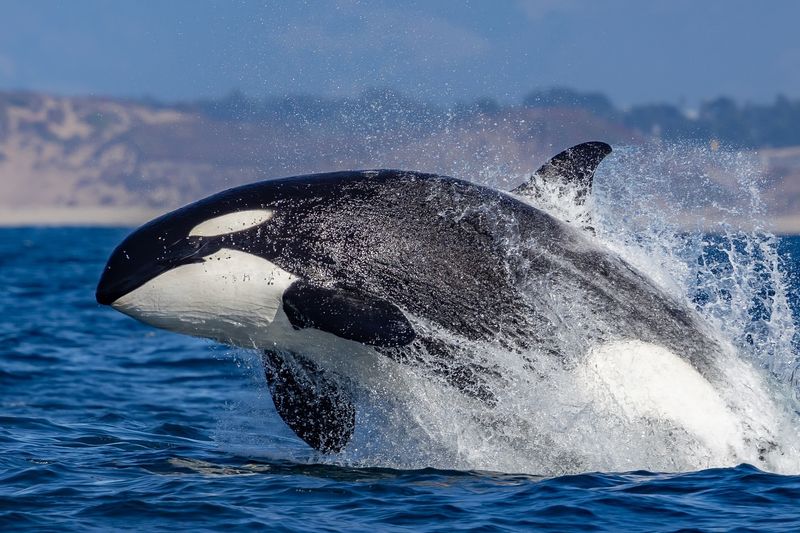
Orcas, or killer whales, are apex predators known for their intelligence and strength. Widely distributed in all the world’s oceans, they are particularly abundant in the cold waters of the Arctic and Antarctic, as well as the North Pacific Ocean. An orca’s physical strength is unparalleled in the marine world.
They are capable hunters, employing sophisticated techniques to capture prey ranging from fish to large marine mammals like seals and even whales. Their social structure is complex, with pods often comprising family groups led by matriarchs.
Orcas communicate using a variety of vocalizations and are known for their coordinated hunting strategies, often working together to encircle prey or create waves to wash seals off ice floes. This behavior underscores their reputation as the “wolves of the sea.” Their presence and power are integral to maintaining the balance of marine ecosystems.
3. Great White Shark
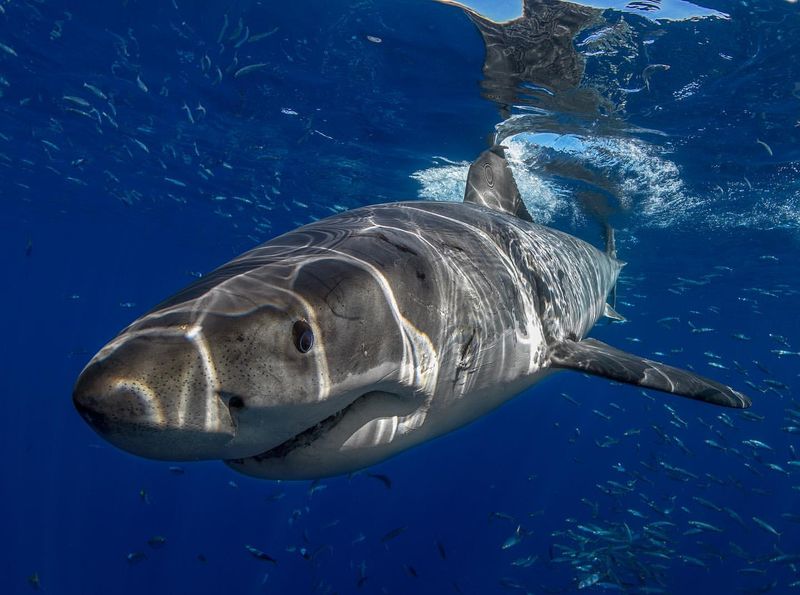
The great white shark is synonymous with power and fearsome reputation, found predominantly along the coasts of South Africa, Australia, California, and the northeastern United States. This apex predator’s strength is evidenced by its impressive hunting capabilities and formidable jaws.
Great whites can launch themselves out of the water, breaching in a spectacular display of power as they hunt seals and other marine life. They possess a highly developed sense of smell and acute hearing, allowing them to detect prey from great distances.
Their powerful bodies enable them to swim at speeds up to 25 miles per hour, making them one of the fastest sharks in the ocean. Despite their fearsome image, great white sharks play a crucial role in marine ecosystems, maintaining the health of the oceans by controlling the population of other species.
4. Giant Pacific Octopus
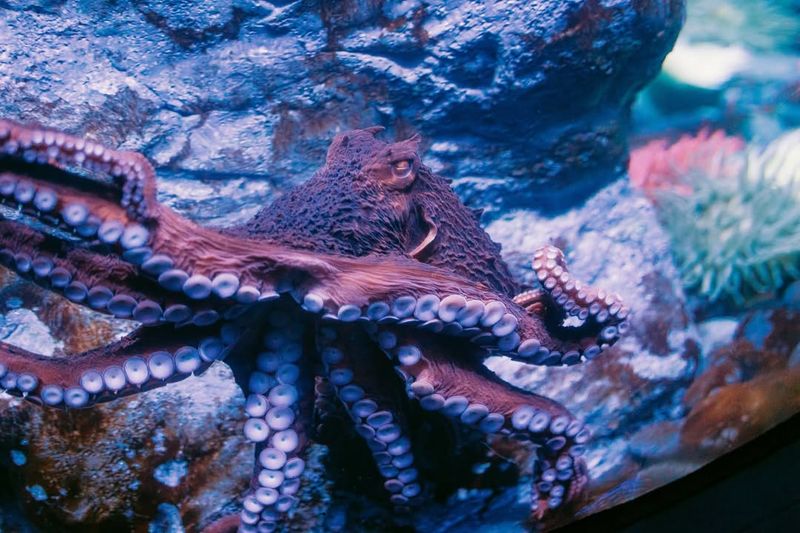
The giant Pacific octopus is an enigmatic creature, renowned for its intelligence and physical prowess. Found in the coastal waters of the North Pacific, from California to Japan, these octopuses are masters of disguise and dexterity.
Armed with eight powerful arms lined with suckers, they can exert incredible force to manipulate objects and capture prey. Their ability to change color and texture aids in evading predators and ambushing prey, making them formidable hunters.
These octopuses are also known for their problem-solving skills and memory, often navigating complex environments with ease. Their strength is not only physical but also cerebral, as demonstrated by their ability to open jars and solve puzzles in captivity.
The giant Pacific octopus thrives in diverse habitats, from shallow tidal pools to the deep sea, displaying adaptability and strength.
5. Saltwater Crocodile
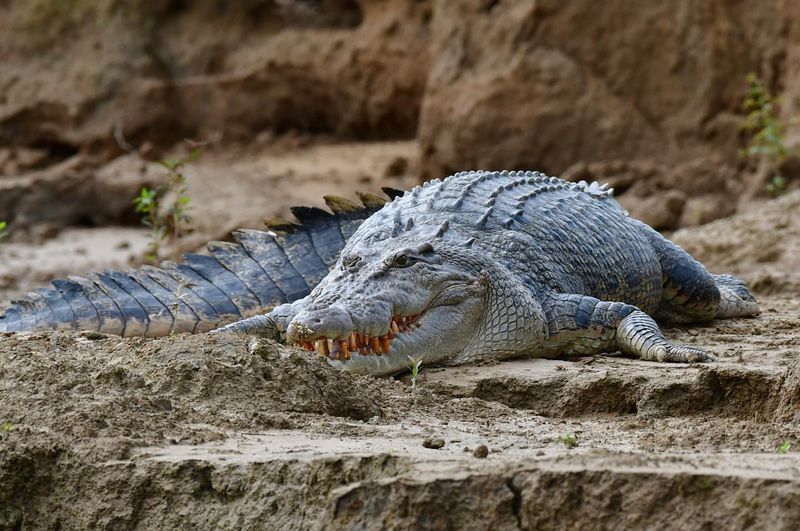
The saltwater crocodile is a living relic of ancient times, recognized as the largest and most powerful reptile on Earth. Inhabiting coastal areas and rivers from India to northern Australia, they are apex predators in their ecosystems.
Their formidable strength lies in their massive jaws, capable of exerting tremendous pressure to crush prey. Saltwater crocodiles are opportunistic hunters, often ambushing prey with stealth and patience. Their diet is varied, including fish, birds, and mammals.
These crocodiles are adept swimmers, able to traverse vast distances in the ocean, making them one of the few reptiles to inhabit both freshwater and saltwater environments.
Their territorial nature and powerful physique ensure dominance over their habitat, creating a significant impact on the local biodiversity.
6. Mantis Shrimp
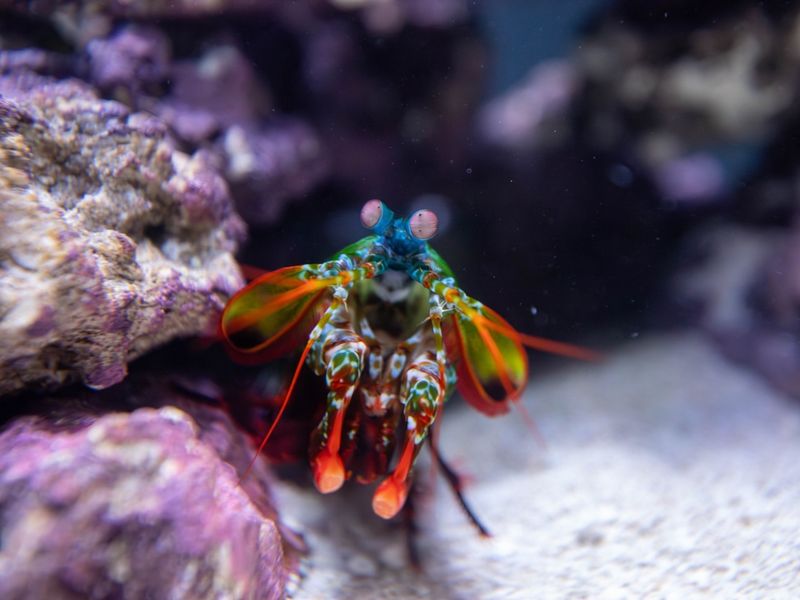
The mantis shrimp is a marvel of natural engineering, famed for its extraordinary speed and striking power. Found primarily in the warm waters of the Indo-Pacific, these small but mighty creatures are among the strongest pound-for-pound animals in the marine world.
Mantis shrimps are equipped with specialized claws that can strike with the acceleration of a bullet, capable of breaking through the hard shells of prey or shattering glass aquariums.
Their vision is equally impressive, possessing a highly complex set of eyes that can see polarized light and detect a broad spectrum of colors. Living in burrows on coral reefs, mantis shrimps play a vital role in their ecosystem by controlling the population of other small marine creatures.
Despite their size, they exhibit remarkable strength and resilience, making them fascinating subjects of study in the field of biomechanics.
7. Giant Sea Bass
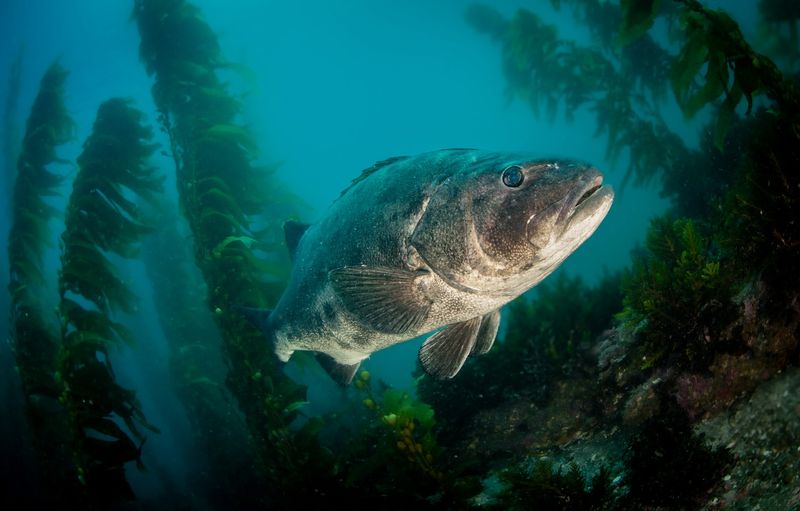
The giant sea bass, also known as the black sea bass, is a colossal fish native to the eastern Pacific Ocean, particularly the coastal waters of California and Mexico. These gentle giants are known for their impressive size and longevity.
Reaching weights of up to 500 pounds, the giant sea bass moves with a slow, deliberate grace, embodying strength and endurance. They are crucial to the health of kelp forest ecosystems, playing a role in maintaining the balance of marine life.
Despite their size, these fish have a calm, non-aggressive nature, often seen swimming in pairs or small groups. Conservation efforts have been underway to protect their populations from overfishing, highlighting their importance to biodiversity.
Observing a giant sea bass in its natural habitat is a testament to the power and tranquility of these magnificent fish.
8. Humpback Whale
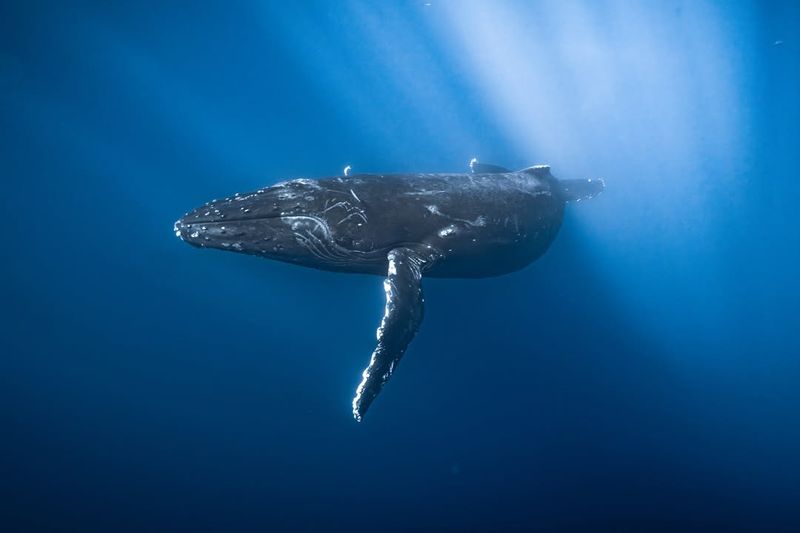
The humpback whale is renowned for its acrobatic displays and complex vocalizations. Found in oceans worldwide, they are most visible in regions like Hawaii, Alaska, and the Gulf of Maine during migration.
These whales are famous for their breaching behavior, where they leap out of the water, showcasing immense strength and agility. Their long pectoral fins, the largest of any whale, aid in maneuvering through the water with precision.
Humpbacks are also known for their songs, which can travel great distances underwater. These vocalizations play a role in communication and mating, adding to the allure of these majestic creatures. Humpback whales contribute to marine ecosystems by aiding nutrient cycling through their feeding and diving habits.
9. Giant Squid
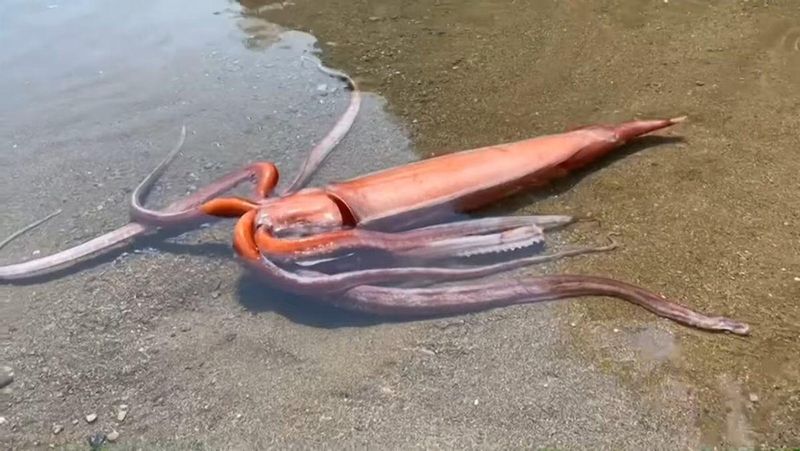
The giant squid is a creature of deep-sea legend, known for its elusive nature and formidable size. Inhabiting the deep ocean, particularly around the North Atlantic, these squids are rarely seen by humans, adding to their mystique.
With eyes the size of dinner plates and tentacles extending up to 40 feet, giant squids are equipped for survival in the ocean’s abyss. Their powerful suckers and sharp beaks enable them to capture prey with precision in complete darkness.
Despite their size, giant squids remain one of the ocean’s great mysteries, with much about their behavior and life cycle still unknown. Their existence reminds us of the uncharted depths and the powerful creatures that inhabit them, embodying the awe-inspiring nature of the sea.
10. Walrus
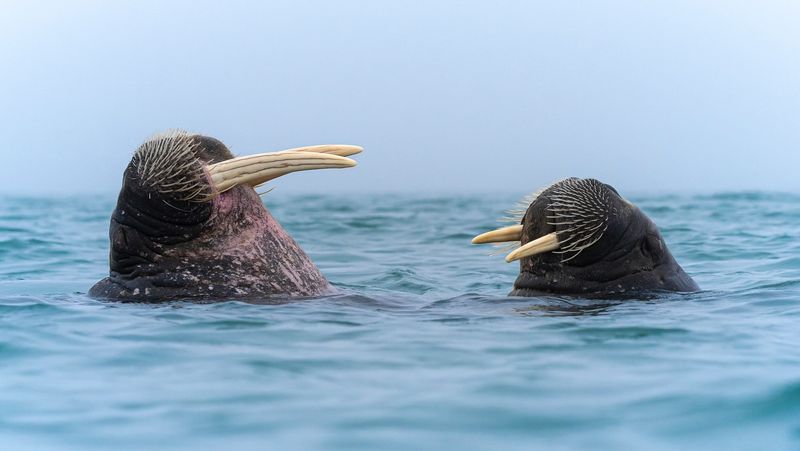
The walrus is a distinctive marine mammal, celebrated for its long tusks and social behavior. Found in the icy waters of the Arctic, they are well-adapted to their frigid environment. Walruses use their tusks for various purposes, including hauling their massive bodies onto ice floes and defending against predators.
Their blubber provides insulation against the cold, enabling them to thrive in harsh conditions. These social animals often gather in large groups, or herds, displaying a communal lifestyle.
They feed primarily on benthic invertebrates, playing a crucial role in the Arctic ecosystem by influencing the distribution of prey species. The walrus’s strength is both physical and social, illustrating the resilience required to survive in one of Earth’s most extreme environments.
11. Leopard Seal
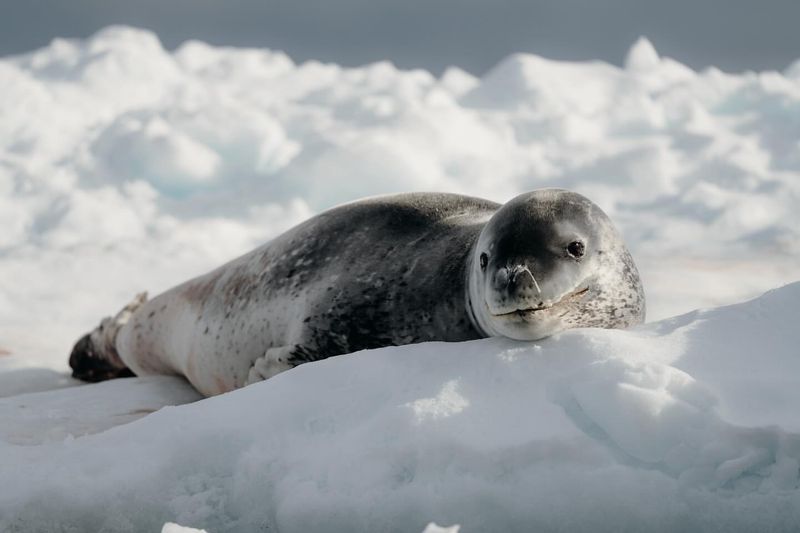
The leopard seal is a formidable predator, commanding the icy waters of Antarctica with its sleek form and powerful jaws. As one of the top predators in its environment, it plays a pivotal role in maintaining the ecological balance.
Leopard seals are adept hunters, preying on a variety of creatures, including penguins and fish. Their agility and speed in water make them singular hunters, while their solitary nature adds to their mystique. These seals have a unique vocalization system, which they utilize during the breeding season.
Their strength and adaptability allow them to navigate the extreme conditions of Antarctica, demonstrating the power of evolution in shaping such efficient predators. Observing a leopard seal in its natural habitat is witnessing pure strength and precision in action.
12. Greenland Shark
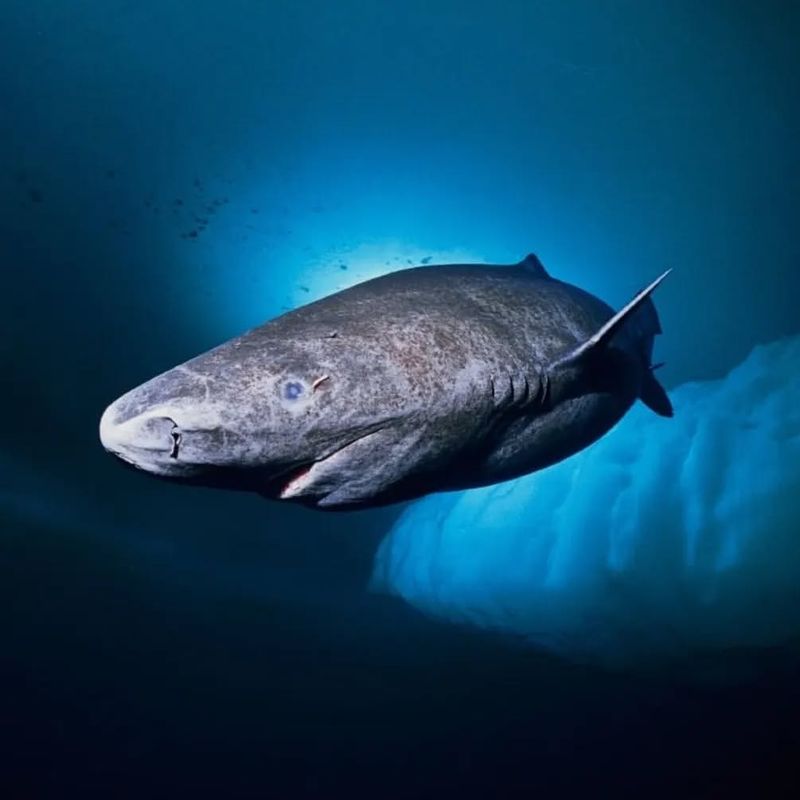
The Greenland shark’s strength lies in its extraordinary longevity. This creature is not only powerful but also ancient, with some individuals living up to 400 years, making it the longest-living vertebrate known.
Found in the cold waters of the North Atlantic and Arctic Oceans, the Greenland shark is a slow but successful predator. Its diet ranges from fish to seals, and its sluggish nature does not hinder its hunting prowess.
Its longevity and slow metabolism are key adaptations for survival in freezing environments, offering intriguing insights into aging and endurance in the animal kingdom.
13. Beluga Whale
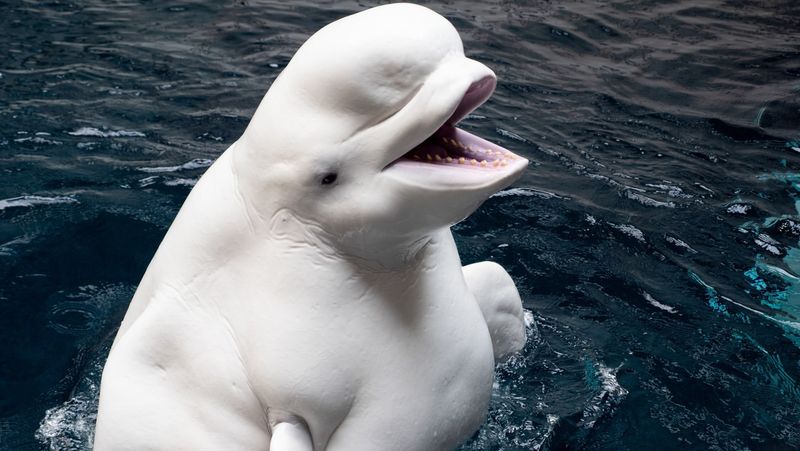
The beluga whale, often referred to as the “canary of the sea,” is known for its vocal communication and distinct white coloration. Inhabiting Arctic and sub-Arctic waters, these whales are highly social creatures.
Belugas have a flexible neck, allowing them to nod and turn their head in various directions, an unusual trait for whales. This flexibility, coupled with their strong bodies, enables them to navigate icy waters efficiently.
Their vocalizations play a crucial role in social interactions, consisting of a wide array of sounds used to communicate and echolocate. Beluga whales form tight-knit groups, often seen swimming and playing together, embodying both the strength of community and individual adaptability. Observing these whales is an enchanting experience, showcasing the harmony of life in the Arctic.
14. Portuguese Man O’ War
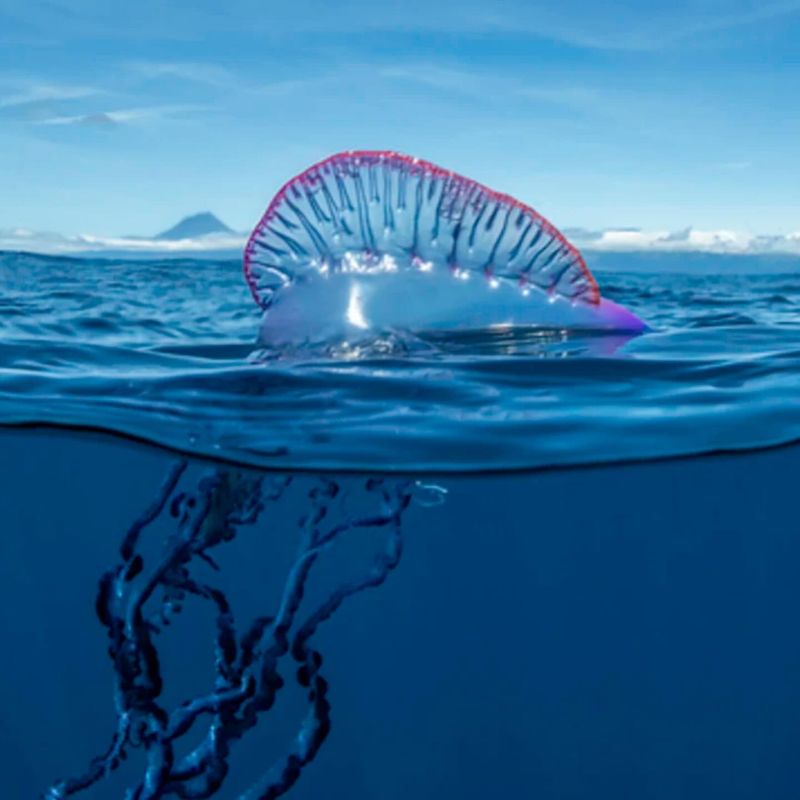
The Portuguese Man O’ War is a mesmerizing yet dangerous presence in the ocean, often mistaken for a jellyfish. Found in the warm waters of the Atlantic, Indian, and Pacific Oceans, it is easily recognizable by its gas-filled bladder and trailing tentacles.
Despite its delicate appearance, the Man O’ War is a formidable predator. Its tentacles can extend up to 165 feet, delivering a potent sting to capture prey. This sting can be painful and even dangerous to humans, making it a creature to admire from a distance.
The Man O’ War is not a single animal but a colony of specialized polyps working together, a fascinating example of cooperation in nature. Its presence in the ocean serves as a reminder of the beauty and peril that coexist beneath the waves, as well as the complex interdependencies among marine organisms.


